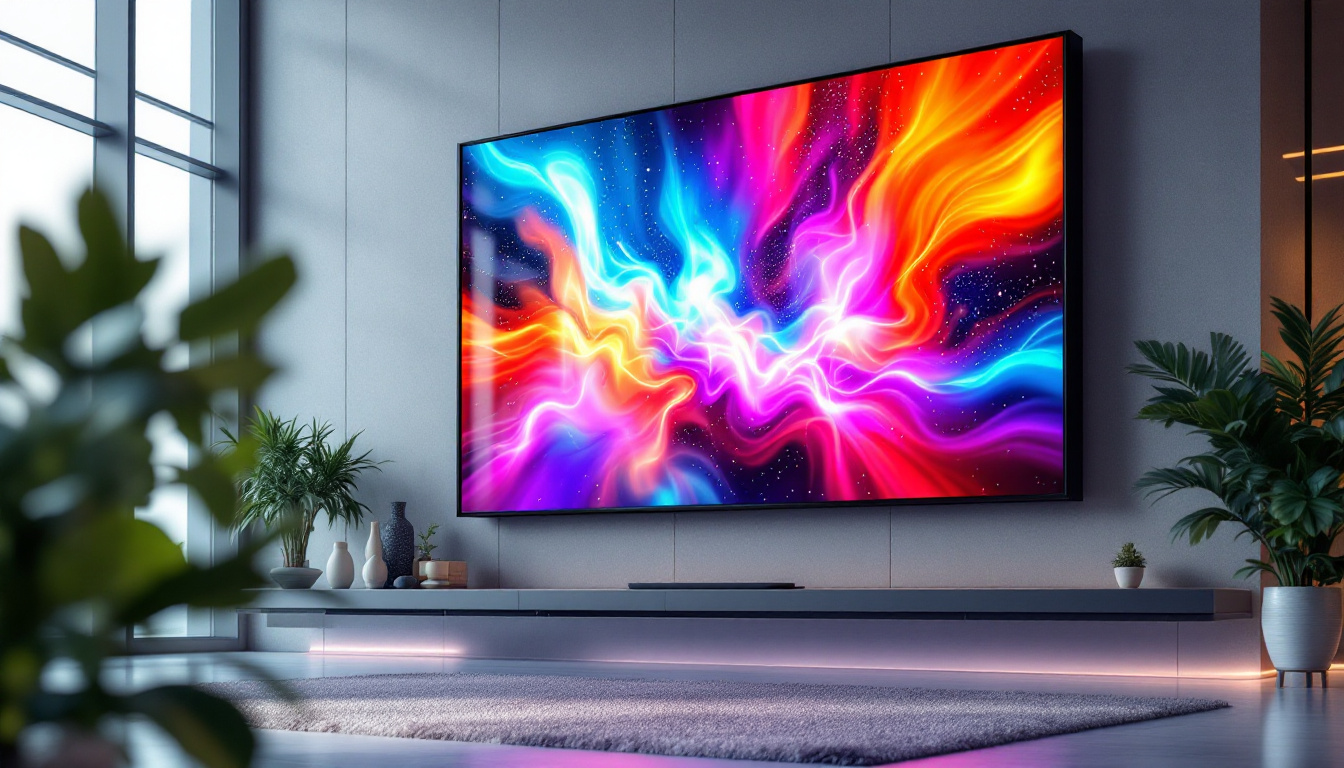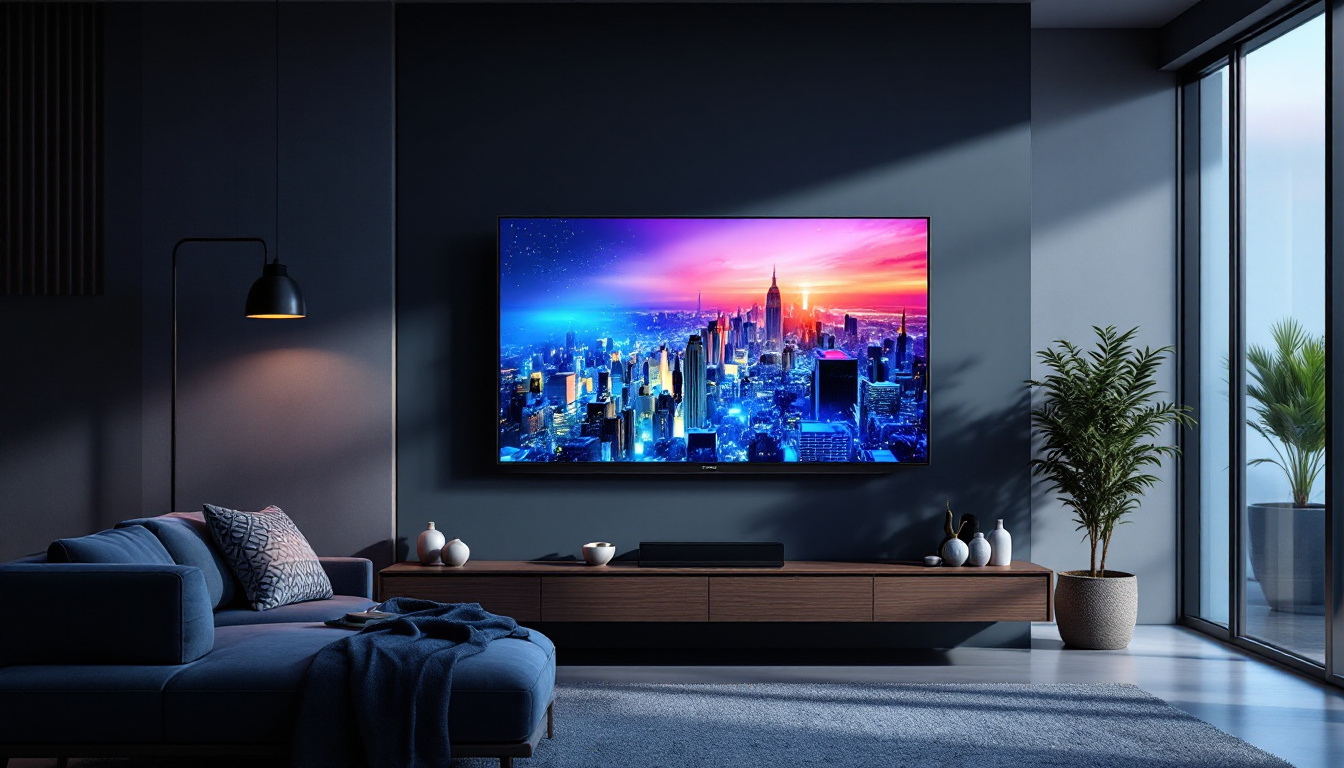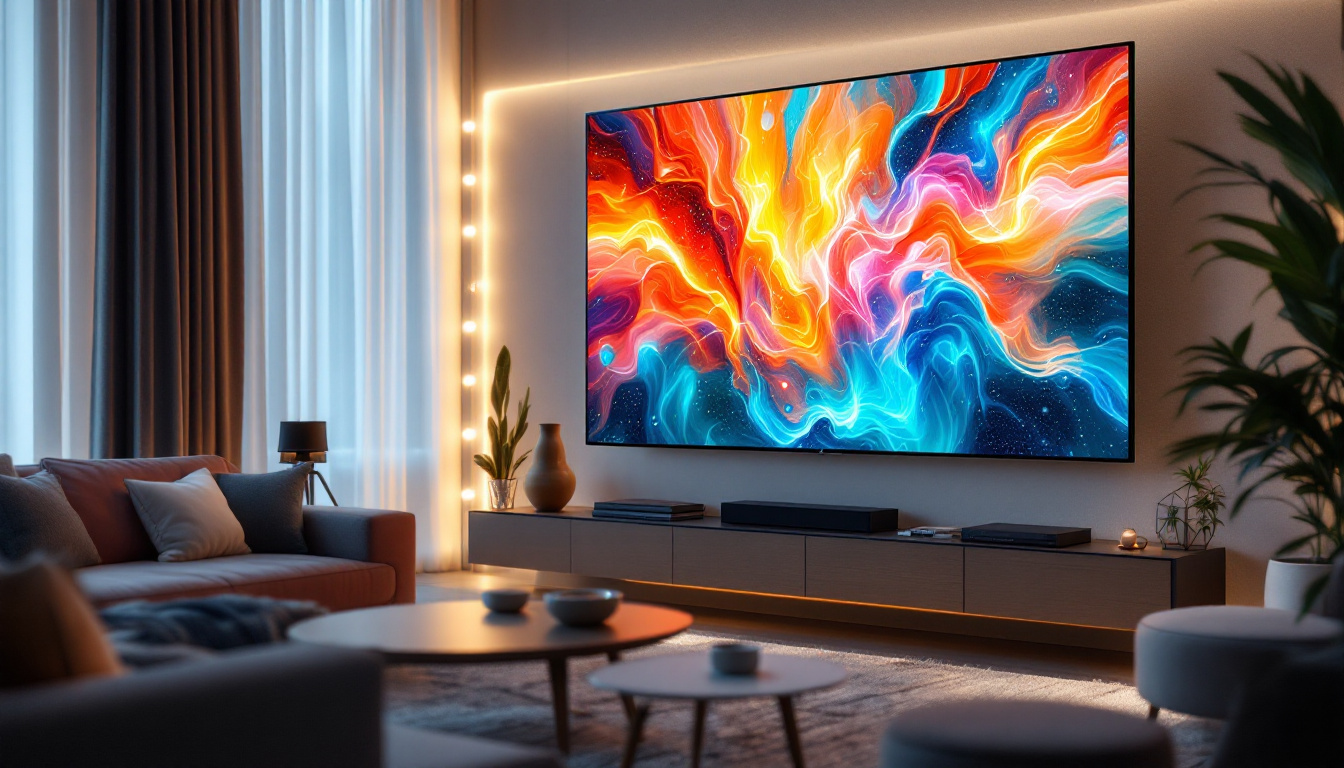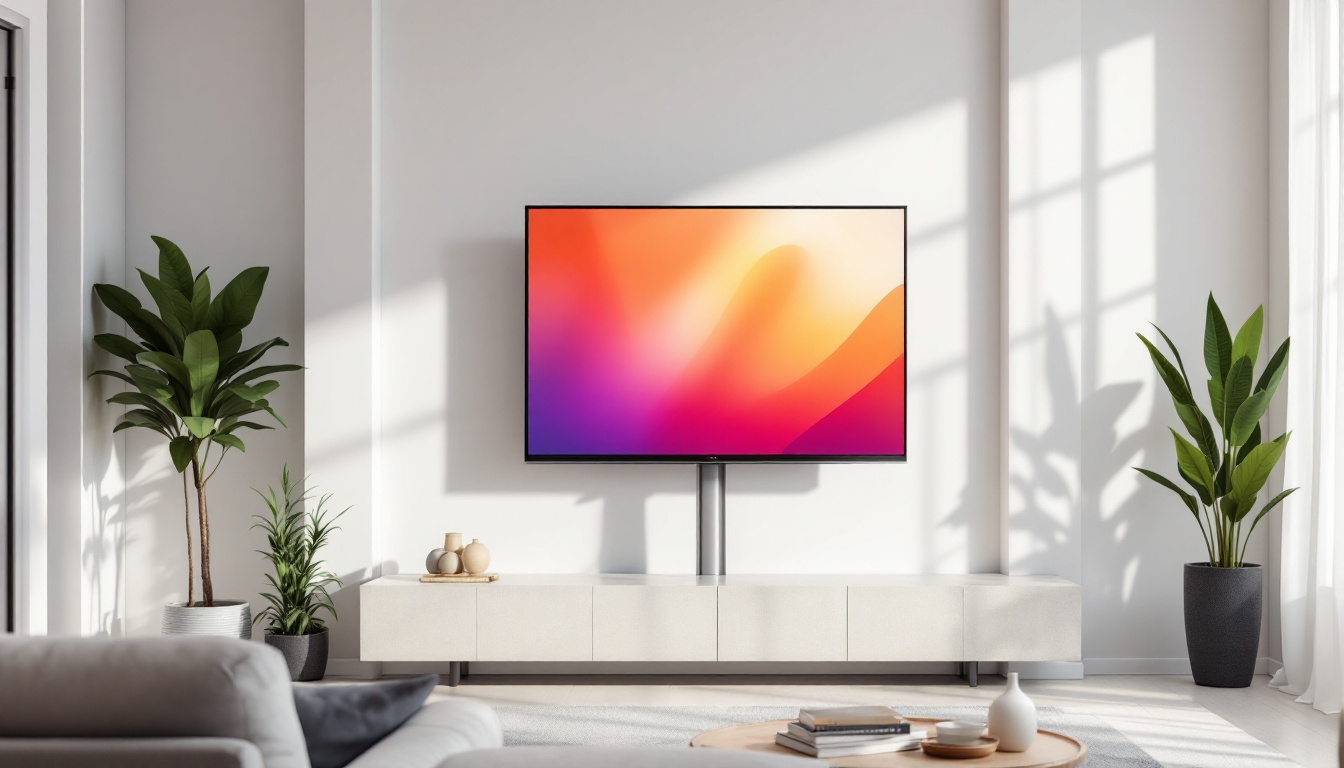In the world of modern television technology, two terms often come up: LCD and LED. While these terms are frequently used interchangeably, they represent different technologies that contribute to the visual experience. Understanding the differences between LCD and LED displays is essential for consumers looking to make informed decisions when purchasing a new television. This article delves into the intricacies of LED displays, how they differ from LCDs, and what makes them a popular choice among viewers.
Understanding LCD Technology
Liquid Crystal Display (LCD) technology has been a staple in the television industry for many years. It utilizes liquid crystals sandwiched between two layers of glass or plastic. When an electric current is applied, these crystals align to either block or allow light to pass through, creating images on the screen.
How LCD Works
The fundamental principle behind LCD technology involves manipulating light. A backlight, typically made of fluorescent tubes, illuminates the liquid crystals. The crystals themselves do not emit light; instead, they control the amount of light that passes through them. This process allows for the creation of colors and images on the screen.
LCD TVs are known for their slim profiles and energy efficiency. They have significantly replaced older CRT (Cathode Ray Tube) televisions due to their lightweight design and improved image quality. However, traditional LCDs have limitations when it comes to contrast and black levels, which can affect the overall viewing experience. To address these concerns, advancements such as LED backlighting have been introduced. This technology enhances brightness and contrast, allowing for deeper blacks and more vibrant colors, ultimately leading to a more immersive viewing experience.
Advantages of LCD Displays
One of the main advantages of LCD displays is their affordability. They are generally less expensive to produce than other technologies, making them accessible to a broader audience. Additionally, LCD TVs tend to consume less power, contributing to lower electricity bills.
Another benefit is their versatility. LCD technology can be used in various applications, from computer monitors to smartphones, making it a widely adopted choice across different devices. Furthermore, the advancements in LCD technology have led to the development of high-definition (HD) and ultra-high-definition (UHD) displays, which offer significantly improved resolution and clarity. This has made LCD screens not only suitable for casual viewing but also for professional environments, such as graphic design and video editing, where color accuracy and detail are paramount. As a result, LCD displays continue to evolve and adapt to meet the demands of both consumers and professionals alike, ensuring their relevance in an ever-changing technological landscape.
Introduction to LED Technology
Light Emitting Diode (LED) technology is often considered a subset of LCD technology. In essence, LED TVs are LCD TVs that use LED backlighting instead of traditional fluorescent backlighting. This distinction is crucial, as it significantly impacts the performance and visual quality of the television.
How LED Works
LED displays utilize a grid of tiny light-emitting diodes to illuminate the screen. These diodes can be arranged in various configurations, including edge-lit and full-array setups. Edge-lit LED TVs have LEDs positioned along the edges of the screen, while full-array models feature a grid of LEDs behind the entire display, allowing for more precise control of brightness and contrast.
This technology enables LED TVs to achieve deeper blacks and brighter whites, resulting in enhanced color accuracy and overall picture quality. The ability to dim specific areas of the screen also improves contrast, making it easier to enjoy movies and shows in darker environments. Additionally, advancements in local dimming technology have further refined this capability, allowing for even greater depth in shadows and highlights, which is particularly beneficial for cinematic experiences.
Advantages of LED Displays
One of the standout features of LED displays is their superior energy efficiency. Compared to traditional LCDs, LED TVs consume less power while providing a brighter image. This efficiency not only benefits the environment but also translates to cost savings for consumers. Furthermore, the longevity of LED technology means that these televisions can last significantly longer than their predecessors, reducing the frequency of replacements and contributing to a more sustainable approach to electronics consumption.
Moreover, LED technology allows for thinner and lighter designs, making it easier to mount on walls or fit into tight spaces. The increased brightness and contrast levels also make LED TVs ideal for viewing in well-lit rooms, where traditional LCDs might struggle to deliver optimal performance. In addition to these practical benefits, the aesthetic appeal of LED TVs has also evolved, with sleek designs that complement modern home decor. Many manufacturers now offer customizable frames and stands, allowing consumers to personalize their viewing experience while enhancing the overall ambiance of their living spaces. This combination of functionality and style has made LED TVs a popular choice among consumers seeking both performance and design in their home entertainment systems.
Comparing LCD and LED Displays
While LED displays are technically a type of LCD, there are significant differences that set them apart. Understanding these differences can help consumers make more informed choices when selecting a television.
Picture Quality
One of the most noticeable differences between LCD and LED displays is picture quality. LED TVs generally outperform traditional LCDs in terms of brightness, contrast, and color accuracy. The ability of LED technology to control backlighting more precisely leads to a more dynamic range of colors and deeper blacks, enhancing the viewing experience.
Additionally, LED TVs often incorporate advanced technologies such as HDR (High Dynamic Range), which further improves color depth and detail in both bright and dark scenes. This feature is particularly beneficial for movie enthusiasts and gamers who seek the best possible visual experience.
Energy Efficiency
Energy efficiency is another critical factor to consider when comparing LCD and LED displays. LED technology is known for its lower power consumption, which can lead to significant savings over time. This efficiency is particularly important for consumers who watch television frequently or leave their TVs on for extended periods.
In contrast, traditional LCDs, while still more efficient than older CRT models, do not match the energy-saving capabilities of LED displays. As environmental concerns continue to grow, many consumers are prioritizing energy-efficient options in their purchasing decisions.
Price Considerations
When it comes to price, traditional LCDs tend to be more affordable than LED TVs. This price difference can be attributed to the cost of manufacturing and the technology involved. Consumers on a budget may find that opting for an LCD TV allows them to enjoy a larger screen size without breaking the bank.
However, as technology advances and production costs decrease, the price gap between LCD and LED displays is narrowing. For those willing to invest a bit more, the benefits of LED technology often outweigh the initial cost, especially in terms of longevity and performance.
Emerging Technologies in Display Screens
As technology continues to evolve, new display technologies are emerging that challenge the traditional LCD and LED paradigms. These innovations promise to enhance the viewing experience even further.
OLED Technology
Organic Light Emitting Diode (OLED) technology is one of the most significant advancements in display technology. Unlike LCD and LED displays, which rely on backlighting, OLED panels emit their light. This allows for true blacks and an infinite contrast ratio, as individual pixels can turn off completely.
The result is stunning picture quality, with vibrant colors and exceptional viewing angles. OLED TVs have become increasingly popular among enthusiasts and professionals alike, although they tend to come with a higher price tag.
QLED Technology
Quantum Dot LED (QLED) technology, developed by various manufacturers, is another noteworthy advancement. QLED TVs use quantum dots to enhance color accuracy and brightness. By placing a layer of quantum dots in front of an LED backlight, these TVs can produce a wider color spectrum and improved brightness levels.
While QLED displays still rely on LED backlighting, the integration of quantum dots allows for a more vibrant and lifelike image. This technology is particularly appealing for viewers who prioritize color performance and brightness in their viewing experience.
Choosing the Right TV for Your Needs
When selecting a television, it’s essential to consider various factors, including viewing habits, room conditions, and budget. Understanding the differences between LCD and LED displays can help guide this decision.
Room Conditions
The environment in which the TV will be placed plays a significant role in determining the best display technology. For well-lit rooms, LED TVs are often the preferred choice due to their superior brightness and contrast capabilities. Conversely, for darker environments, OLED technology may provide the best viewing experience, thanks to its ability to produce true blacks.
Viewing Habits
Consideration of viewing habits is also crucial. For those who watch movies and shows frequently, investing in a high-quality display, such as an OLED or QLED, may enhance the overall experience. On the other hand, casual viewers or those primarily using the TV for gaming may find that a more budget-friendly LCD or LED TV meets their needs perfectly.
Budget Constraints
Budget constraints are a reality for many consumers. While LED and OLED technologies offer superior performance, they often come at a higher price point. Traditional LCDs can provide a satisfactory viewing experience at a lower cost, making them a viable option for budget-conscious shoppers.
Conclusion
In conclusion, understanding the differences between LCD and LED displays is essential for making an informed television purchase. While LED technology offers numerous advantages, including improved picture quality, energy efficiency, and design flexibility, traditional LCDs still hold their ground as a cost-effective option.
As new technologies continue to emerge, consumers have more choices than ever when it comes to selecting the perfect television. Whether opting for an LCD, LED, OLED, or QLED display, the key is to consider individual preferences, viewing environments, and budget constraints. By doing so, viewers can ensure they choose a television that meets their needs and enhances their overall viewing experience.
Discover the Future of Viewing with LumenMatrix
Ready to elevate your visual experience with the latest in LED display technology? Look no further than LumenMatrix, a pioneer in crafting LED display modules that transform how you engage with media. From the comfort of your home to the buzz of outdoor events, LumenMatrix offers a diverse range of solutions including Indoor and Outdoor LED Wall Displays, Vehicle LED Displays, and more. Embrace the future of vibrant, energy-efficient, and captivating displays. Check out LumenMatrix LED Display Solutions today and see your world in a whole new light.































